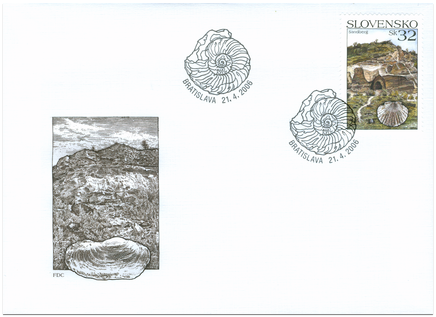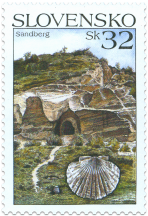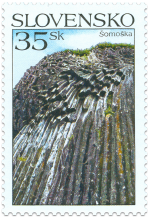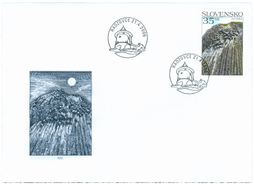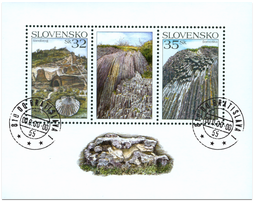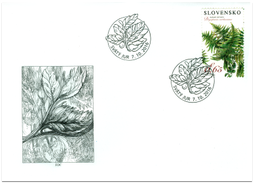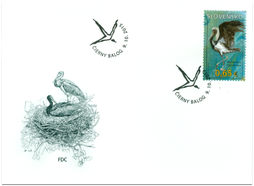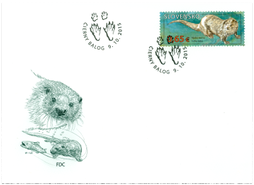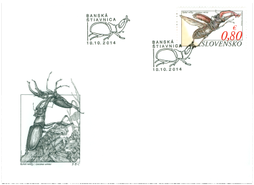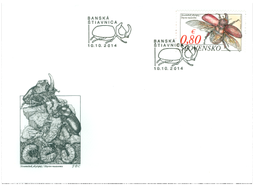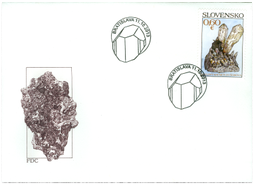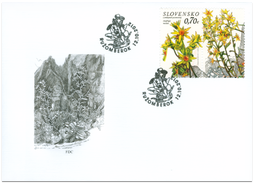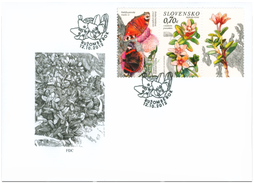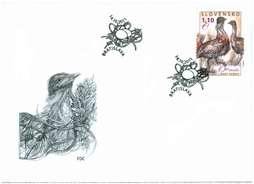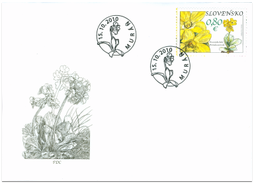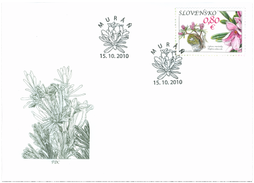FDC 373 Date of issue
21.04.2006 Face value
32.00 Sk Sell price
1.20 €
© Slovenská pošta, a.s., 2006 The range of geological processes over different geological eras resulted in the formation of a wide range of rocks in Slovakia. The mutual action of often opposing phenomena (such as accumulation/removal and redistribution of rock masses, alternation of sea and land) due to climatic changes resulted in many unique natural formations, many of which are now legally protected. One of the most remarkable geological areas is the theme of this Slovak postage stamp. It is world-renown for its 300 types of fossil: Sandberg (– from the German ‘sand hill’). It is situated in the National Nature Reservation of Devínska Kobyla, in the municipality of Devínska Nová Ves, in the southwest margin of Bratislava. From the geological point of view, this area is in the transient sector between the Alps and the Carpathians. The wider zone around Sandberg was formed by the sediments of the warm (subtropical) tertiary sea that intruded into this region about 15 million years ago. Littoral and beach sediments with horizontally settled layers are characteristic. The layers are formed mainly of fine-grained sands and gravels, with compacted sandstone in the upper banks. The layers of lithotamnian carbonates are also interesting. The sands were largely excavated in the past. The shells of foraminifers, slugs, shellfish, and even shark teeth and the bones of large mammals form the majority of fossils. Fractions of pectens, for example the Flabelipecten solarium (Lamarc) that is reproduced on the stamp, are amongst the most common. The slug Panopea menardi is reproduced on FDC. The fossils of larger animals (e.g. vertebra of a whale, seals, turtles) have also been unearthed. This site has been proclaimed by the international geologic community as a standard locality for the substage “devín”, i.e. the upper part of Badenian. In terms of flora and fauna, many species of protected plants (e.g. iris, pheasant’s-eye, etc.) flourish in this area, and in the sand walls many protected species of birds – including the honey-buzzard and sand-martin – build their nests. RNDr. Karol Marsina, CSc.
Show lessSimilar products
FDC 621 Date of issue
07.10.2016
FDC 596 Date of issue
09.10.2015
FDC 595 Date of issue
09.10.2015
FDC 572 Date of issue
10.10.2014
FDC 573 Date of issue
10.10.2014
FDC 549 Date of issue
11.10.2013
FDC 548 Date of issue
11.10.2013
FDC 524 Date of issue
12.10.2012
FDC 525 Date of issue
12.10.2012
FDC 505 Date of issue
14.10.2011
FDC 483 Date of issue
15.10.2010
FDC 482 Date of issue
15.10.2010
© 2024 POFIS - Postal philatelic service. All rights reserved

